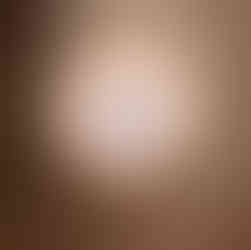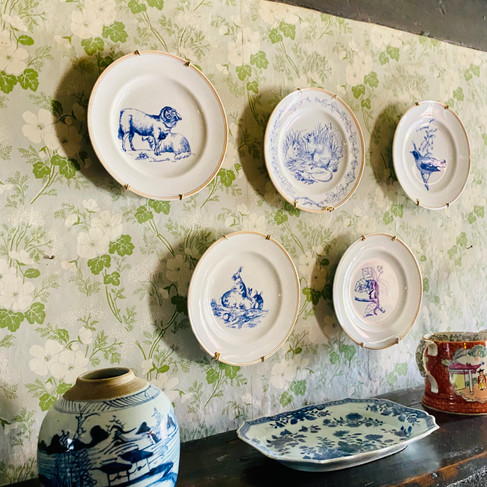Lake District to London
- lauren-riley
- Jul 19, 2022
- 6 min read
Updated: Jul 25, 2022
Continuing with my research into the Potters sees my focus on Beatrix still. I headed to London to find out more about her and her family in the current exhibition at the V&A.

The exhibition is a collaboration between the V&A and the National Trust. Curated by Annemarie Bilclough (V&A) and Helen Antrobus (NT), this exhibition introduces us to the life of Beatrix Potter beyond the books. Focusing on her life as a scientist, conservationist and farmer, exploring the places and animals that inspired the work for the "little books".

I don't want to give too much away about the exhibition as it's worth the visit. I specifically went to try to visualise the story of Beatrix's family and their northern identity which I will discuss in this blog.
Beatrix was the granddaughter of two northern families - as we already know, her paternal grandfather was Edmund Potter, whose Printworks he set up in Glossop in 1825.
Edmund & Jessie later moved to Dinting Lodge in 1842, where they lived for 19 years before moving on to Camfield Place, Hertfordshire, around the time Beatrix was born in 1866.

Her maternal grandfather, John Leech, was a textile merchant from Stalybridge.
Gorse Hall, Stalybridge, was the home of Helen Leech, Beatrix's Mother.
It is from these two families in which Beatrix's parents held most of their wealth which allowed them such a luxurious lifestyle.
Rupert Potter, Beatrix's father, studied in Manchester and went on to be a lawyer.
My brother and I were born in London, because my father was lawyer there - Beatrix
Both Beatrix and Bertram appeared to dislike living in the city. It's believed she was emotionless after hearing about the destruction of her "unloved birthplace" during the Blitz.
The exhibition introduces us to the family through many artistic and creative outputs. The family appreciated the arts and sciences as well as the natural world.
Here we have the wedding quilt of Rupert Potter and Helen Leech. Unsure exactly who made this however, it was likely made by Helen Leech and sisters or friends. The quilt is made up of various kinds of cotton, silks and velvets. These would have been the type of fabrics John Leech would have traded. There is a replica of this quilt in Beatrix's home of Hill Top that covers her bed.

There was also a family photo album - Rupert Potter was an amateur photographer, many of the photographs of Beatrix's life taken by him. Beatrix appears to be his favourite model through his photography. We see a love of nature and natural landscapes too.

Through my early research work, I found several items in the V&A archives, such as the Dinting Vale Printworks sample dye book, Beatrix's portfolio and Rupert Potter's sketchbook. I was pleased to discover these would be on display in the exhibition.
Below, is Beatrix's portfolio that is bound in fabric from Grandfather, Edmund Potter's Printworks. In one of Beatrix's letters to Norman Warne, she expresses how easy it would be for her to have fabrics printed for bindings of her books.
"If they had any pattern suitable there would of course be no difficulty in getting E.Potter & Co to print in any desired shade of colour, or cloth"

This is the dye sample book, featuring the various printed pieces of cotton that would have come from Dinting Vale Printworks.

The below photograph shows Rupert Potter's sketchbook, open on one of my favourite pages. Another reason I was keen to see this sketchbook is because of the inscription, 1st September 1853 - Dinting Vale Lodge. Rupert would have been around 21 years old when he made this inscription, indicating that he may have been residing at Dinting Vale lodge whilst studying in Manchester. Interesting to see what the landscape of Dinting Vale offered for inspiration!

Creativity ran in the potter household quite clearly. Beatrix along with her brother and father copied animals from instructional drawing books. The ceramic plate with the blue tit illustration was one of Rupert's transfers from copying bird illustrations.
The same transfer printed plates are in Beatrix's Hill Top Home. These plates were made by Rupert, for the nursery at 2 Bolton Gardens, where the children were brought up.
Beatrix treated Hill Top like her own museum. She collected various homewares and trinkets. Most of all is the curation of family heirlooms, including this Brentwood chair, inherited from Beatrix's paternal grandmother, Jessie.
Jessie and Edmund moved from Dinting Lodge to live at Camfield Place, Hertfordshire, when Edmund became an MP for Carlise. Beatrix would often visit her grandparents at Camfield. It would be here where she developed her close relationship with her grandmother.

On display, there is also a First published edition of The Tailor of Gloucester, in the publisher's deluxe binding of floral cloth with white buckram title labels lettered and bordered in gilt. This is a deluxe copy, bound in "Lavender Chintz" From Dinting Vale Printworks.

There is so much more to the exhibition. However, I don't want to spoil it for anyone planning to go. These were a handful of the items I was interested in to help me visualise the family history. I am much more of a visual learner. This visit has helped put some of the relationships into context for me. The curation of this exhibition is well thought out and portrays the life of Beatrix in a different light than what we might think of just Beatrix, the author. We see a lot more aspects of her life through this exhibition. It is clear that "place" is also valuable to Beatrix. We can understand the process of her drawings and storytelling with more clarity from this display.
After leaving the exhibition, I wanted to check out some other items on display in the V&A. Early in my research, I contacted Jefferson University, which also has a collection of Edmund Potter & Co swatches. They hold approx 134 swatches and have found that one of those swatches matches a dress that is on permanent display in the V&A.


After one last stroll around the museum and its galleries, where I looked for printed textiles and other clues to the history of printed textiles, I walked out into Kensington. Kate, Director of Glossop Heritage Trust, who I have been working closely with on this project, kindly sent me the locations of Potter points of interest.
The first is Edmund Potter's London home, just at the end of the road. Coming out of the V&A, heading right and passing the Natural History Museum, brings you right up to 64 Queens Gate. This is the residence that Edmund and Jessie moved into after Edmund left Dinting Vale Printworks in the hands of his other son, Edmund Crompton Potter.
Edmund and Jessy would live here in addition to Camfield Place, Hertfordshire once it had been built in 1866. After Edmund died in 1883, Jessie resided at both Camfield and Queensgate properties until she died in 1891.

The next place that I was looking for was the site where Beatrix's home was at Bolton Gardens. On the way, I spotted this blue plaque on Cromwell Place. A house where Sir John Everett Millais, the Pre-Raphaelite painter, had lived. Millais was a good friend of the Potters and especially Rupert. Amateur photographer Rupert would assist Millais by photographing sitters or backgrounds for the artist to work from later on.

Finally, just off Old Brompton road, I found the site of 2 Bolton Gardens. Approximately a 15-minute walk from the museums on Cromwell road. It is easy to imagine that Beatrix would spend time in both The Victoria & Albert Museum and The Natural History Museum to study various items such as the waistcoat at the V&A that inspired the Tailor of Gloucester illustrations. And the many different species at the Natural History Museum for her scientific studying. It's believed that the Natural History Museum could be seen from their 3rd-floor nursery at 2 Bolton Gardens.


On the 28th July 2022 , myself and Kate will be delivering a Talk at Victoria Hall on part of the Potter's story. This will be followed with a WAN.DER on Sunday 31st July, from KIN.DER.
This is part of the KIN.DER Co-operative curated walk series.
Select Bibliography
Hurst, John G., Edmund Potter and Dinting Vale (Manchester: Edmund Potter and Company, 1948)
Lear, Linda., Beatrix Potter, A life in Nature (UK, Penguin Books, 2008)
This project is supported by Arts Council England - Develop Your Creative Practice. Supported in kind by LOCAL and in partnership with Glossop Heritage Trust and Derbyshire Records office.











Comments